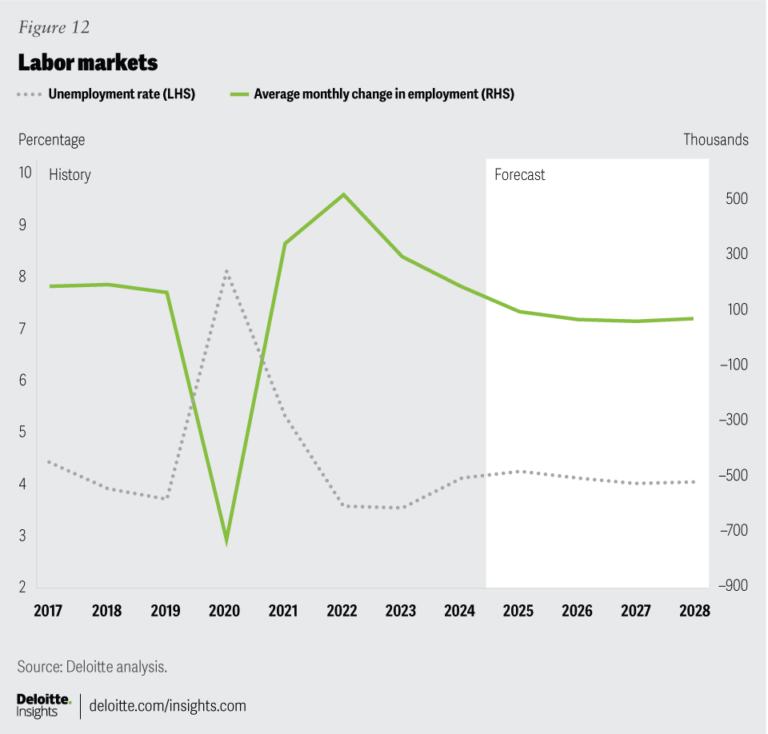Sha Hanting/China News Service/VCG via Getty Images
- US real GDP grew at an annualized rate of 2.8% in the third quarter of this year, less than the forecast.
- This means the economy is still growing healthily — even if it was weaker than expected.
- The report comes just before next week’s presidential election and Federal Reserve meeting.
In the third quarter, US economic growth fell short of expectations but remained strong.
A news release from the Bureau of Economic Analysis said real gross domestic product rose at an annualized rate of 2.8% in the third quarter of the year, less than the forecast of 3%.
“The increase in real GDP primarily reflected increases in consumer spending, exports, and federal government spending,” the news release said. Consumer spending was a particular highlight, with personal consumption expenditures growing at a strong 3.7% annualized rate.
Real GDP rose at an annualized rate of 1.6% in the first quarter and 3% in the second quarter.
The weaker-than-expected GDP growth doesn’t necessarily mean the US is heading toward a recession. There’s still a lot of strength in the economy. Layoffs remain low, and inflation-adjusted wage and income growth are back to their strong pre-pandemic trends.
Investment in nonresidential structures fell in the third quarter at an annualized rate of 4%. Investment in nonresidential equipment had another strong quarter, surging at an annualized rate of 11.1%.
The presidential election is less than a week away, and the economy is top of mind for voters. Additionally, the Federal Reserve will announce its next interest-rate decision on November 7. The Fed has several recent data releases, in addition to the upcoming jobs report on Friday, to help it determine whether or how much it will cut rates. Before the GDP report, traders expected the central bank would cut rates by 25 basis points in November. That was still the case after the report, with a probability of around 96%.
The US economy has generally been strong since recovering from the 2020 Covid recession, and the new GDP reading adds to this. David Kelly, chief global strategist at J.P. Morgan Asset Management, said in a note that “in an economy that has averaged 2.1% growth since the start of this century,” adding that anything between 2.5% and 4% “shows a continuation of above-trend real growth.”
Wednesday’s reading is the advance estimate based on early data collected by the Commerce Department, so it could change as more information rolls in. Hurricane Helene in September and Hurricane Milton in October affecting businesses could impact GDP in the third or fourth quarter; it may mean larger revisions upward or downward.
Mark Hamrick, a senior economic analyst at Bankrate, told Business Insider earlier this month that because economic data will likely be “foggy” because of issues like strikes and recent hurricanes, “we may have to employ a little bit of patience to get through the end of the year and hope for better visibility about economic data.”
